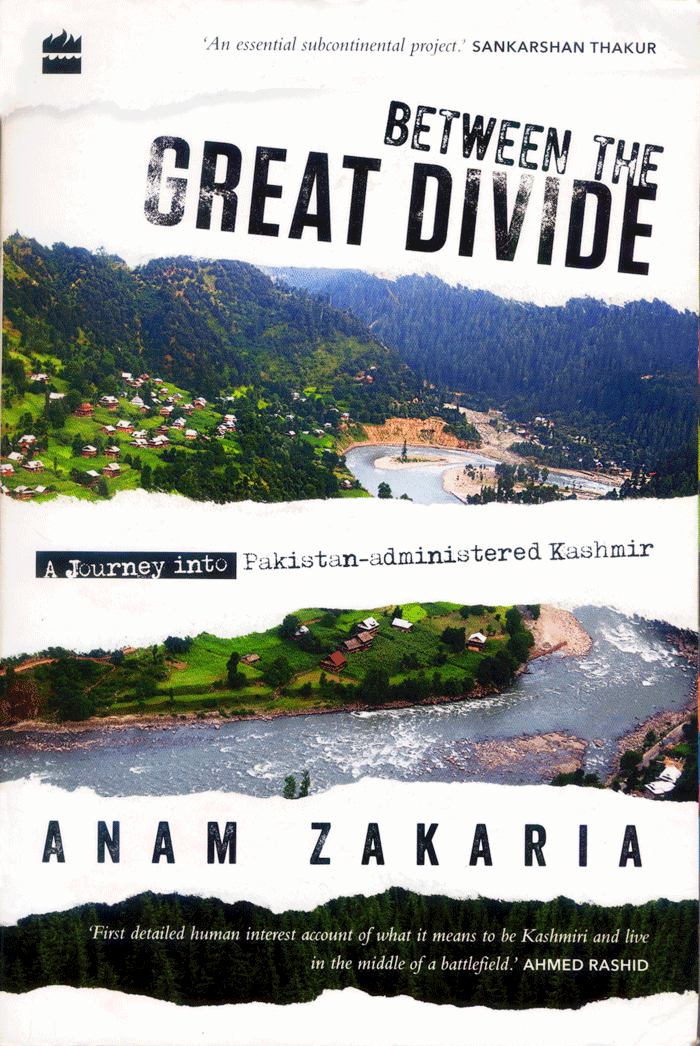In the Forbidden Zone
By Deneb Sumbul | Bookmark | Published 6 years ago
When Emperor Jehangir first visited Kashmir, he was so captivated by the land that he exclaimed, “If there is any paradise on earth, it’s here, it’s here, it’s here.” No longer. Kashmir has become a living hell for Muslims in Indian-occupied Kashmir (IoK), since the state was divided between Pakistan and India over 70 years ago. The rising acrimony and the constant exchange of artillery fire across the Line of Control (LoC) between the two nuclear nations has only exacerbated the miserable plight of Kashmiri Muslims in IoK. 
There has been a significant amount of literature and debate on the Kashmir issue since 1947; however, it has focused primarily on the turmoil in IoK and its state-sponsored violence against the Muslims; there is limited reference to the other side of the border. Known as a tourist destination, ‘Azad’ Kashmir for the most part, remains a mystery, even to Pakistanis. Little is known about Azad Kashmiris and their lives, especially those who live along the LoC and have been in the direct line of fire from the Indian side.

Anam Zakaria, the author of Between the Divide.
Anam Zakaria’s third and most recent book, Between the Great Divide – A Journey into Pakistan-administered Kashmir, helps fill that gap. Her extensive research throws light on the realities of the region and those who inhabit it. The author travelled along the crescent-shaped territory of Azad Kashmir to study how the local Kashmiris view their unique situation. Zakaria gives a rare cultural, social and political insight into their lives in the three main sections of her book – Conflict, State, and Beyond the Ceasefire.
The present territory of Kashmir is claimed by both, India and Pakistan, while the Kashmiri separatists on both sides of the border refer to it as a “disputed” territory. Kashmiris living on either side of the border identify it differently. So it is Indian-occupied Kashmir (IoK) or Pakistan-occupied Kashmir (PoK). Over the years, the LoC, once known as the Ceasefire Line, has only contributed to deepening the divide between the two neighbours. However, even within Azad Kashmir, the sentiments among the locals vary. Interestingly, a majority of the locals who live in the one-third part of Jammu and Kashmir held by Pakistan are non-Kashmiris.
The author takes us through significant historical and political events of the divided state, that have only exacerbated the Kashmiri conflict, starting from the tribal invasions in 1947 to the subsequent wars with India in 1965 and 1971 to some of the worst shelling in the 1990s, followed by the Kargil War in 1999 that led to needless bloodshed of thousands.
The author explores how the locals perceive and relate to the ongoing Kashmir dispute, the violence against the Muslims in IoK, the armed insurgency and the significant presence of the Indian Army across the border, that has inadvertently silenced their voices as well. She shares their sense of a lack of identity and their absence from politics. They become relevant only as part of a news cycle when they bear the brunt of Indian gunfire from across the border – but are subsequently forgotten.
Travelling along the LoC, between 2014-16, to Muzaffarabad and the Neelam Valley besides Kotli, Mirpur and those areas where there were ceasefire violations, she interviewed a wide spectrum of people, including refugees from across the border still living in camps without basic amenities, trying to eke out a living on a monthly stipend of Rs 1,500. To include all perspectives, the author also interviewed political leaders, Hurriyet members, high-profile officials, ex-militants who were once part of the insurgency, and some locals.
One of the bloodiest decades of the Kashmiri conflict in the 1990s, continued for over a span of 15 years, with only temporary periods of relief. As the northern-most district of Azad Kashmir, the Neelum Valley’s population was the worst affected each time there was an exchange of cross-border artillery fire. The book gives an insight into the danger-ridden existence of those residing along the LoC. By the time Pakistan and India signed a ceasefire agreement in 2003, thousands had either been killed or wounded or their lives were destroyed. The destruction of schools and hospitals had left behind a generation of illiterate, ailing Kashmiris, says Zakaria.
The author includes narratives of Kashmiris living in the refugee camps in Pakistan-administered Kashmir, which was at odds with the local sentiment. To begin with they spoke Kashmiri as opposed to the Pahaari and Gojari language spoken by the locals. Although they bore the brunt of the shelling at the LoC, they were viewed with suspicion by the Pakistani establishment as well. Consequently they did not want to be part of either country. Those few with separatist leanings were subjected to beatings and harassment by the local authorities whenever they tried to voice their opinions. Several Kashmiris favoured an independent, secular Kashmir, rather than unification with Pakistan, says Zakaria.
The book has numerous heart-wrenching accounts of refugees who fled from the torture of Indian security forces in IoK and subsequently joined the insurgency along with Pakistani Kashmiris. The author writes of the psychological damage and disorders the refugee families, especially the women and children continue to suffer. Unsurprisingly, some of these accounts help one understand why the militant movement in IoK had gained significant support in Azad Kashmir and the mujahids began to be regarded as ‘holy warriors.’
One such ex-mujahid explained that the insurgency movement had been solely initiated by the Kashmiris in 1989. At that time it seemed the only way forward, and neither the Afghans nor the Pakistanis were involved in pushing them into it. However, it was in the 1990s, when the fight for self-determination became associated with the idea of establishing an Islamic caliphate by Lashkar-e-Tayyaba, that it was manipulated by the establishment. It was said to be done to “quell the sentiments of Kashmiri nationalism.” However, it ended up damaging the Kashmiri struggle for freedom. Understandably, the author has changed the names of her interviewees to protect their identities.
The most compelling read in the book are the accounts of those women who had suffered horrific tragedies such as witnessing their fathers, husbands, brothers and children being killed by the Indian shelling and the subsequent hardships they braved.
While researching Azad Kashmir’s history, Zakaria also inquired about the local non-Muslim communities that had lived there before Partition. Now almost non-existent, Zakaria mentions a few books that have documented their exile, forced conversions and the mass suicides by young Hindu and Sikh women. Very few are aware that the “tribal invasions” had completely snuffed them out. The only remnants of their once-thriving communities is a lone temple or Gurdwara. Amardeep Singh, a Sikh writer Zakaria met, spoke of his Muzaffarabad family’s origins and members who were victims of ethnic cleansing during the tribal raids of 1947; there is no trace left of them.

Kashmir’s Line of Control.
We also learn from Zakaria’s book that one of the adverse consequences of the Simla (now Shimla) Conference in 1972 was that Azad Kashmir lost nearly all of its autonomous administrative powers. Additionally, there is frustration at not being allocated the promised 6 per cent quota in government jobs; successive governments have filled this quota with their own political appointees.
In her essays, Zakaria also includes all aspects that either impact or reflect on Kashmir including the Tehreek-e-Hurriyat (or the Hurriyat movement), as well as the state’s perspective on the Kashmir issue through interviews of high profile officials, political leaders, ex-army officers who choose to stay anonymous, except General Jehangir Karamat and Dr Toqeer Gilani, the president of Jammu Kashmir Liberation Front’s chapter in AJK and Gilgit-Baltistan. The UN reports on Kashmir, the media coverage and the role of puppet governments on both sides of the divide are also discussed.
A strong sense of alienation and disenfranchisement exists among the real stakeholders of Kashmir on this side of the LoC; they desire a homeland where their voices will be heard. In that respect, Between the Great Divide is a brave, insightful study of a neglected people and their resilience – and one comes away with the feeling that the grass is not necessarily any greener in Azad Kashmir.
The writer is working with the Newsline as Assistant Editor, she is a documentary filmmaker and activist.


